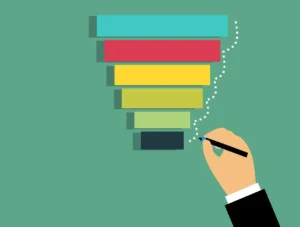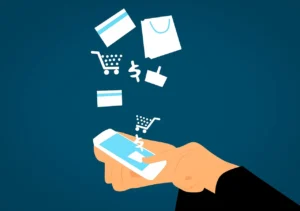
Introduction: The Key to Building a Thriving Business
In the world of dropshipping, where competition is fierce and customer loyalty is hard-earned, delivering stellar customer service is your secret weapon. Unlike traditional retail, dropshipping enables you to operate without holding inventory, allowing you to focus entirely on your customers. However, this freedom comes with its own challenges, especially when it comes to creating a reputation that inspires trust.
This blog post explores why “customer service in dropshipping” are inextricably linked, how to overcome common challenges, and the steps you can take to deliver a customer experience that keeps buyers coming back.
Why Customer Service in Dropshipping Matters?
Dropshipping is unique because you act as the intermediary between suppliers and customers. While this model eliminates inventory management, it also puts customer service entirely in your hands.
Here’s why this matters:
- Reputation Is Everything: Customers don’t see your suppliers. When things go wrong, the blame falls squarely on you.
- Differentiation in a Crowded Market: Exceptional customer service can be your competitive edge, setting you apart in an industry where products are often similar.
- Repeat Business: Happy customers return. Poor experiences drive them away and invite negative reviews that hurt your credibility.
Building Exceptional Customer Service in Dropshipping: A Comprehensive Guide
In the world of dropshipping, customer service is often the deciding factor between repeat customers and lost sales. A strong focus on customer satisfaction not only helps build trust but also contributes to long-term growth. Since dropshipping is a business model that depends on third-party suppliers to fulfill orders, providing an exceptional customer experience can be challenging—but it’s also incredibly rewarding.
In this guide, we’ll explore how to build a customer-centric dropshipping business, address common customer service in dropshipping challenges, and offer tips for enhancing communication, anticipating issues, and scaling your customer service efforts. By the end, you’ll be equipped to elevate your dropshipping business by prioritizing customer service.
Step 1: Understand Your Customers’ Needs
The first step in providing great customer service in dropshipping is understanding your customers’ needs and pain points. It’s crucial to put yourself in your customers’ shoes and experience your website and sales process from their perspective. Here are some questions to guide your evaluation:
- Is the website user-friendly? Ensure that your website is easy to navigate. A confusing website layout can deter potential customers and harm your brand’s reputation.
- Are product descriptions clear and informative? Your product pages should answer all questions customers may have, including size, material, features, and benefits. Unclear or misleading descriptions can lead to dissatisfaction.
- Is the checkout process smooth? The checkout process should be quick and simple. Complicated checkout steps can cause cart abandonment and lost sales.
Regularly conduct usability testing to identify and eliminate pain points in your website and customer journey. Use tools like heatmaps and customer surveys to gather feedback and continuously improve.
Step 2: Be Transparent About Shipping and Policies
Transparency is key to building customer trust, especially in dropshipping, where shipping times can vary, and products are often sourced from overseas. Many dropshipping businesses fail to be upfront about these factors, which can lead to frustrated customers and negative reviews. Here’s how to be transparent:
Shipping Times and Fees
Clearly communicate estimated shipping times before customers check out. If your products come from international suppliers, let customers know about potential delays upfront. Providing accurate shipping estimates prevents surprises and sets realistic expectations.
Return and Refund Policies
Have clear, concise return and refund policies on your website. Ensure that customers understand how they can return items if they are dissatisfied and how long the process will take. Not having a clear policy may lead to customer frustration when issues arise.
Handling Delays
Shipping delays are an inevitable part of dropshipping. If a delay occurs, inform customers as soon as possible and offer a solution, whether it’s a partial refund, a discount code for future purchases, or a free shipping upgrade. Proactively addressing delays can prevent dissatisfaction and show your commitment to resolving issues.
By being transparent about all aspects of the transaction, you’ll foster trust and ensure that customers know what to expect.

Step 3: Anticipate Logistical Challenges
In dropshipping, you rely on suppliers to fulfill orders. However, there are common logistical challenges that can impact customer satisfaction, such as supplier delays, poor packaging, incorrect items, and stockouts. By preparing for these challenges, you can minimize their impact on your customers.
Supplier Delays
Supplier delays can happen due to holidays, inventory shortages, or unforeseen issues. Have backup suppliers or alternative solutions in place to quickly address delays. Inform customers in advance if there will be a delay and offer solutions like a discount or expedited shipping to retain their trust.
Poor Packaging
Damaged goods are a common complaint in dropshipping. To mitigate this, communicate with your suppliers about packaging standards. If necessary, negotiate better packaging options to ensure products arrive in pristine condition. You may also want to request that your suppliers use branded packaging to provide a professional touch.
Incorrect Items
Mistakes in fulfilling orders can happen, but it’s essential to address them quickly. If a customer receives the wrong product, apologize sincerely and offer to send the correct item immediately. If possible, let them keep the incorrect item as a gesture of goodwill.
Inventory Stockouts
When a product goes out of stock, it can leave customers disappointed. Keep a close eye on your suppliers’ inventory levels and provide updates to customers if an item is out of stock. Offer alternatives or allow them to pre-order the product for delivery at a later date.
By anticipating these issues and creating a contingency plan, you can ensure that your customers are satisfied, even when challenges arise.
Enhancing Customer Communication
Effective communication is essential in customer service. Clear communication helps set expectations and ensures that customers feel heard and valued. Here are some strategies for enhancing customer communication:
Clear Expectations
Set realistic response times for customer inquiries. For example, aim to respond to all customer service inquiries within 24-48 hours. Communicate these timelines on your website, so customers know when to expect a response. Meeting or exceeding these expectations can greatly enhance the customer experience.
Templates with a Personal Touch
While templates can save time, always personalize your responses. A friendly, tailored email shows customers that you value their business. Make sure to include the customer’s name and reference specific details about their inquiry, such as the product they purchased. A personalized response creates a positive customer experience and helps build rapport.
Proactive Updates
Proactively reach out to customers if you notice any issues with their order. If a shipping delay occurs or an item is out of stock, notify customers immediately. Explain the situation in a friendly and empathetic manner, and offer a solution, such as a refund, a discount, or an alternative product. Proactive communication helps prevent frustration and demonstrates excellent customer service in dropshipping.
Leveraging Technology for Better Service
Technology can help streamline customer service processes, improve communication, and reduce response times. Here are some tools and systems you can use to enhance your customer service in dropshipping business’s :
Live Chat and Chatbots
Live chat is an excellent tool for providing real-time assistance to your customers. If you’re not available 24/7, consider implementing a chatbot with pre-written answers to frequently asked questions. This can address common inquiries and guide customers through the buying process. Live chat is particularly helpful for reducing cart abandonment and improving customer satisfaction.
Order Tracking
Provide customers with easy-to-use order tracking links and tracking numbers. This transparency reduces the need for customers to contact you about the status of their order, which saves time for both parties. An order tracking system enhances the customer experience by giving them the information they need to follow their order’s progress.
Automated Email Sequences
Automating key customer communication can save time and ensure that no customer is left in the dark. Set up automated emails for order confirmations, shipping updates, delivery notifications, and post-delivery follow-ups. Automated emails can also be used to request feedback or reviews, further improving the customer experience.

Turning Feedback into Growth
Customer feedback is one of the most valuable tools you have for improving your business. Both positive and negative feedback provide insights that can help you enhance your service and product offerings. Here’s how to make the most of customer feedback:
Encourage Reviews
Encourage customers to leave reviews after purchasing products. Positive reviews help build trust with potential customers and increase conversion rates. Make it easy for customers to leave reviews by sending follow-up emails or including links to review platforms in post-purchase emails. You can also offer incentives, such as discounts or loyalty points, to encourage reviews.
Handle Negative Reviews Gracefully
Negative reviews are inevitable, but how you handle them is what matters most. Respond to negative reviews with empathy, acknowledging the issue and offering a solution. Be professional, polite, and solution-oriented. Addressing negative reviews publicly shows prospective customers that you care about resolving problems and value feedback.
Learn from Feedback
Use customer feedback to identify recurring issues and improve your processes. For example, if multiple customers complain about damaged packaging, work with your supplier to find a solution. Continuously learning from feedback and making improvements will help you deliver an even better customer experience.
Scaling Customer Service with Outsourcing
As your dropshipping business grows, handling all customer service inquiries in-house can become overwhelming. Outsourcing customer service is a viable option to scale your efforts without sacrificing quality. Here are some tips for outsourcing customer service in dropshipping:
When to Outsource
Outsource customer service when you start receiving more inquiries than you can handle. Start by outsourcing to a small, trained team that understands your business values and priorities. Outsourcing allows you to focus on growing your business while ensuring your customers receive the attention they deserve.
Outsourcing Dos and Don’ts
When outsourcing customer service, be sure to train your team to handle common questions and provide personalized responses. Avoid using generic, robotic answers that lack warmth and empathy. Customers can sense insincerity, which can negatively impact their experience.
Creating a Customer Community
Building a customer community fosters trust, loyalty, and engagement. When customers feel connected to your brand and to each other, they are more likely to become repeat buyers and advocate for your business. Here’s how to build a strong customer community:
Benefits of Community Engagement
A customer community allows customers to share experiences, tips, and even answer each other’s questions. It strengthens the emotional connection to your brand and creates a sense of belonging. Communities also provide valuable insights that can help improve your products and services.
Building the Community
To build your community, create a Facebook group or online forum where customers can interact. Encourage customers to share reviews, photos of your products, and creative ways they use your items. Actively participate in the community to maintain engagement and ensure a positive atmosphere.
Common FAQs About Customer Service in Dropshipping
Q: How can I handle late deliveries?
A: Proactively communicate delays, offer updates, and consider compensating customers with discounts or free shipping on their next order.
Q: Should I inform customers that I’m dropshipping?
A: Yes. Honesty about your business model builds trust and reduces customer frustration caused by unexpected delays.
Q: How can I reduce customer complaints?
A: Focus on quality control, clear communication, and transparency in policies. Partner with reliable suppliers and regularly test the customer experience.

Q: What’s the best way to handle returns?
A: Make your return policy clear and simple. Offer hassle free returns to minimize friction and build trust.
Conclusion
Providing exceptional customer service in dropshipping is key to building a successful business. By understanding your customers’ needs, being transparent about shipping and policies, anticipating logistical challenges, and leveraging technology, you can create a seamless experience that keeps customers coming back. By continuously learning from feedback, scaling your efforts with outsourcing, and building a community around your brand, you’ll foster trust and loyalty that will drive long-term success in the competitive dropshipping market
In the world of dropshipping, where customer trust and satisfaction determine success, exceptional customer service is non negotiable. By prioritizing transparency, communication, and proactive problem solving, you can build a loyal customer base and outshine competitors. Remember, every interaction is an opportunity to build your reputation, gain repeat customers, and grow your business.
Start implementing these strategies today, and watch your dropshipping business thrive!















